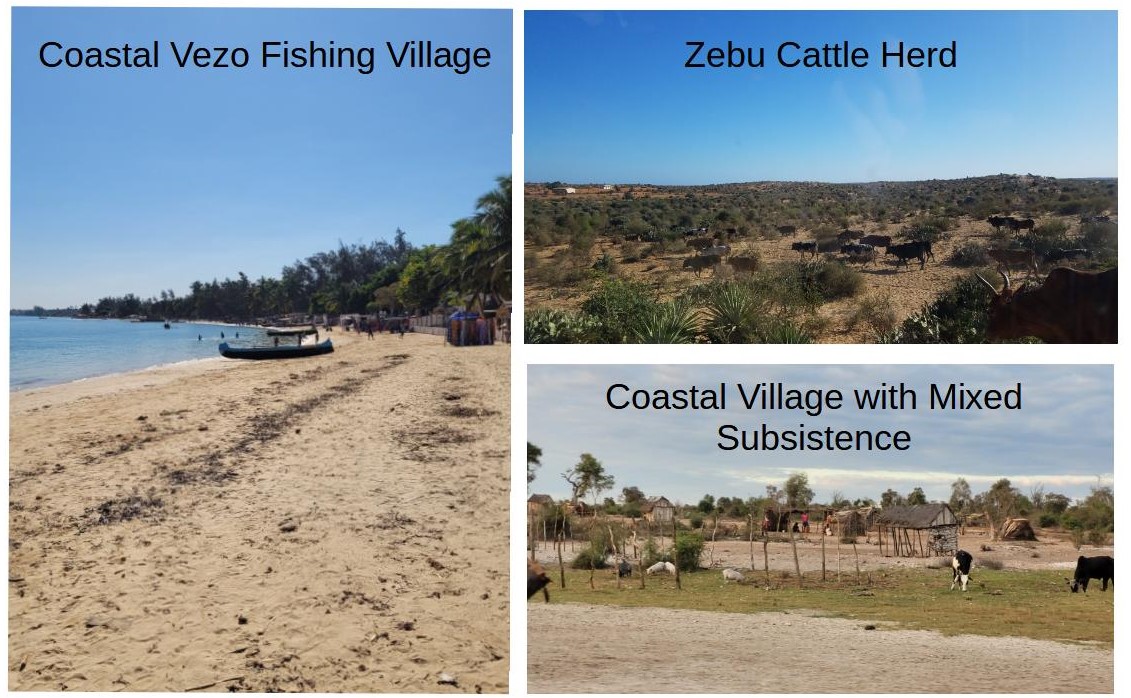
Dylan Davis
@DDavis_Arch
Followers
215
Following
277
Media
23
Statuses
153
Postdoc Research Scientist @columbiaclimate; Co-Editor of Archaeological Prospection; Environmental Archaeologist; Remote Sensing & Geospatial Analysis
Joined September 2019
New paper in @SciReports: "Traditional land use is integral to ecological function in SW Madagascar." Using machine learning and remote sensing, we show how land use from hundreds of years ago has a continual impact on ecological systems today.
nature.com
Scientific Reports - Traditional land use is integral to ecological function in SW Madagascar
0
1
1
New in Ecological Monographs (led by @LeanneNPhelps) we review current research trends and gaps in understanding grassy biomes on Madagascar. Bringing together over 50 researchers, the paper presents a framework to guide future transdisciplinary research.
esajournals.onlinelibrary.wiley.com
Grassy biomes (savanna and grasslands) are globally extensive and host a unique biodiversity that is of central importance to human livelihoods. We focus here on the island of Madagascar—a microcosm...
1
6
8
New publication (led by @LeanneNPhelps): We analyze archaeological isotope data from across Africa to explore how people adapted their liveelihoods to increase resilience to environmental changes. This holds important lessons for sustainability today
0
1
1
These findings are important as they provide new ways to evaluate landscape use across different societies practicing varied subsistence strategies. This work also provides ways of using archaeology to make real-world impacts to efforts like environmental conservation 6/7.
1
0
2
Overall, our results show that signatures of fishing/foraging, pastoralist, and mixed-economy settlements are distinct, but subtle. We can distinguish between different land-use activities when assessing overall variability in signatures between seasons 5/7
1
0
2
Pastoralism, in particular, has often been blamed for ecological degradation due to deforestation. Our analysis, however, challenges this as a blanket fact. Rather, pastoralist sites in SW Madagascar are highly resilient to seasonal environmental changes 4/7.
1
0
2
Here, we use multitemporal and multispectral satellite imagery to examine how legacy impacts of different livelihood strategies impact seasonal variations in vegetation and soil composition 3/7.
1
0
2
Identifying the role of different subsistence land-use practices using the archaeological record is challenging as there is rarely clear separation between strategies like foraging, fishing, or pastoralism. Yet, some behaviors are assumed to have negative ecological outcomes 2/7.
1
0
2
Just published in JAA (@ElsevierArchaeo), we use satellites to investigate how subsistence strategies influence the long-term stability and resilience of ecological systems on Madagascar! @OBTlab @columbiaclimate @LamontEarth 🧵 1/7
1
5
10
Thanks to all of the co-authors (including @kgdouglass, Bram Tucker, and many others) and funding provided by @NSF, @WennerGrenOrg, and SPARC at the University of Arkansas 7/7.
0
0
3
This finding suggests that traditional land-use practices actually improve ecosystem function over time! This is important as it challenges traditional narratives surrounding Mikea communities, who are often blamed for ecological degradation of the Mikea Forest 6/7.
1
0
3
We find clear correlations between the changes to soil chemistry observed in lake cores and satellite images and timelines of human occupation in the study area. Additionally, we find that human activities lower seasonal variation in vegetative productivity 5/7.
1
0
3
Mikea communities have been largely associated with hunting and gathering, but oral accounts indicate that they have a history of cattle herding. Our study indicates that communities have lived and herded cattle in this region for at least the last 450 years 4/7
1
0
3
In this article, we use a combination of evidence from archaeology, satellite imagery, oral histories, and paleoecology to explore the long-term impacts of human habitation and agropastoral land-use on the spiny forest ecosystem in the Mikea Forest National Park. 3/7.
1
0
3
Madagascar is a focal point for ecological conservation efforts due to its immense levels of biodiversity. Many conservation efforts place people and nature at odds, seeking to protect environments from human exploitation, despite long histories of human management 2/7.
1
0
3
New in Journal of Social Archaeology, how do indigenous community livelihoods impact Madagascar’s dry forests? We investigate the lasting legacy of traditional land-use on the Mikea Forest @OBTlab @columbiaclimate @LamontEarth 🧵1/7
1
2
5
RT @ScienceAdvances: The population of Rapa Nui before European contact was far smaller than previously thought, challenging the theory tha….
0
1
0
RT @LamontEarth: A popular trope says settlers overtaxed an isolated Pacific island, wrecked the environment, and suffered a population col….
0
7
0






